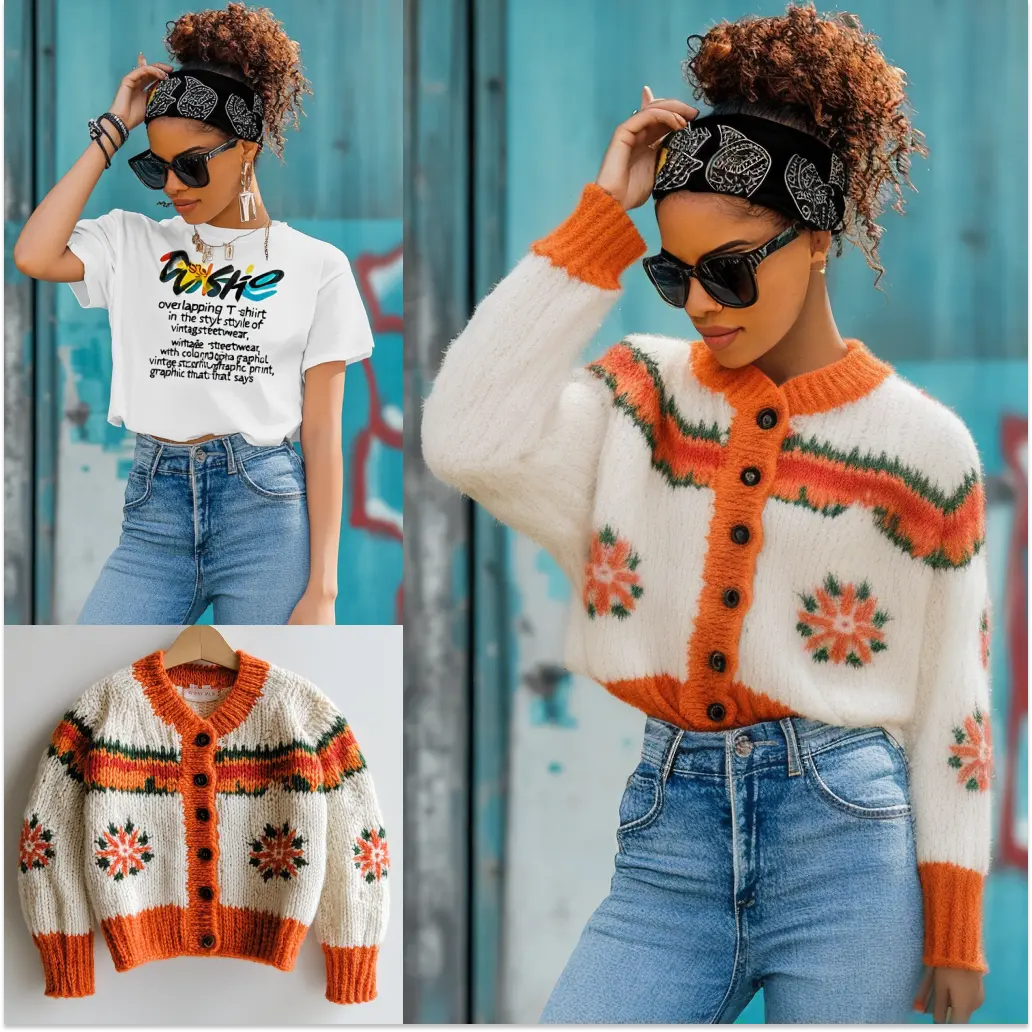ComfyUI Node: Face Swap (InfiniteYou)
FaceSwap_InfiniteYou
CategoryComfyUI-InfiniteYou
ZenAI-Vietnam (Account age: 467days) Extension
ComfyUI_InfiniteYou Latest Updated
2025-03-31 Github Stars
0.16K
How to Install ComfyUI_InfiniteYou
Install this extension via the ComfyUI Manager by searching for ComfyUI_InfiniteYou- 1. Click the Manager button in the main menu
- 2. Select Custom Nodes Manager button
- 3. Enter ComfyUI_InfiniteYou in the search bar
Visit ComfyUI Online for ready-to-use ComfyUI environment
- Free trial available
- 16GB VRAM to 80GB VRAM GPU machines
- 400+ preloaded models/nodes
- Freedom to upload custom models/nodes
- 200+ ready-to-run workflows
- 100% private workspace with up to 200GB storage
- Dedicated Support
Face Swap (InfiniteYou) Description
Facilitates seamless face swapping using advanced AI for high-quality, realistic results in digital art and media.
Face Swap (InfiniteYou):
The FaceSwap_InfiniteYou node is designed to facilitate the seamless swapping of faces in images using advanced AI techniques. This node leverages sophisticated face detection and embedding technologies to accurately identify and replace facial features from a reference image onto a target image. The primary goal of this node is to provide a high-quality, realistic face swap that maintains the original image's context and lighting conditions. By utilizing deep learning models, the node ensures that the swapped face aligns perfectly with the target image's orientation and expression, offering a powerful tool for creative projects in digital art and media production.
Face Swap (InfiniteYou) Input Parameters:
adapter_file
The adapter_file parameter specifies the file path to the adapter model used in the face swap process. This model is crucial for adapting the face embeddings to the specific requirements of the swapping algorithm. The correct adapter file ensures that the face swap is executed with high accuracy and realism. There are no specific minimum or maximum values, but the file must be compatible with the node's requirements.
control_net
The control_net parameter refers to the control network that guides the face swap process. It helps in maintaining the structural integrity of the target image while integrating the new face. This parameter is essential for ensuring that the swapped face aligns well with the target image's features. The control network should be pre-trained and compatible with the node's architecture.
model
The model parameter indicates the deep learning model used for face recognition and embedding extraction. This model is responsible for identifying facial landmarks and generating embeddings that are used in the face swap process. The choice of model can significantly impact the quality of the face swap, with more advanced models providing better results.
ref_image
The ref_image parameter is the reference image from which the face is extracted. This image should contain a clear and well-lit face to ensure accurate detection and embedding extraction. The quality and resolution of the reference image can affect the final output, so high-quality images are recommended.
image
The image parameter is the target image where the face swap will be applied. This image should be compatible in terms of lighting and resolution with the reference image to achieve a seamless swap. The target image serves as the canvas for the face swap, and its characteristics will influence the final appearance of the swapped face.
clip
The clip parameter involves the use of CLIP embeddings to enhance the face swap process. These embeddings help in maintaining the semantic integrity of the image, ensuring that the swapped face matches the context and style of the target image. The parameter is crucial for achieving a coherent and aesthetically pleasing result.
start_at
The start_at parameter defines the starting point of the face swap process in terms of the image's timeline or sequence. This is particularly useful in video processing where the face swap needs to be applied from a specific frame. The parameter ensures that the swap is synchronized with the desired point in the image sequence.
end_at
The end_at parameter specifies the endpoint of the face swap process. Similar to start_at, this is used in scenarios where the face swap is applied over a sequence of images or frames, allowing for precise control over the duration of the swap.
vae
The vae parameter refers to the Variational Autoencoder used in the face swap process. The VAE helps in generating realistic facial features by learning the distribution of the face embeddings. This parameter is essential for ensuring that the swapped face appears natural and blends seamlessly with the target image.
weight
The weight parameter controls the influence of the reference face on the target image. A higher weight means the reference face will have a more significant impact on the final output, while a lower weight allows more of the target image's original features to be retained. The default value is typically set to 0.99, providing a balance between the reference and target features.
blur_kernel
The blur_kernel parameter determines the size of the kernel used for blurring the edges of the swapped face. This helps in smoothing the transition between the swapped face and the target image, reducing any visible seams or artifacts. The default value is 9, but it can be adjusted based on the specific requirements of the image.
ip_weight
The ip_weight parameter is an optional input that adjusts the influence of the image prompt embeddings on the face swap process. This parameter can be used to fine-tune the balance between the reference and target images, providing additional control over the final output.
cn_strength
The cn_strength parameter controls the strength of the control network's influence on the face swap. A higher value ensures that the structural integrity of the target image is maintained, while a lower value allows for more flexibility in the face swap. This parameter is crucial for achieving a realistic and coherent result.
noise
The noise parameter introduces random noise into the face embeddings to enhance the robustness of the face swap process. A default value of 0.35 is used to prevent overfitting and ensure that the swapped face appears natural. Adjusting this parameter can help in achieving a more realistic output, especially in challenging lighting conditions.
image_kps
The image_kps parameter refers to the keypoints of the image, which are used to align the swapped face with the target image. These keypoints are crucial for ensuring that the facial features are correctly positioned and oriented, providing a seamless integration of the swapped face.
mask
The mask parameter is used to define the area of the target image where the face swap will be applied. This allows for precise control over the region affected by the swap, ensuring that only the desired area is modified. The mask can be adjusted to include or exclude specific features as needed.
combine_embeds
The combine_embeds parameter determines how multiple face embeddings are combined during the face swap process. Options include average and norm average, which affect the final appearance of the swapped face. This parameter is important for achieving a coherent and balanced result, especially when dealing with multiple reference images.
Face Swap (InfiniteYou) Output Parameters:
swapped_image
The swapped_image parameter is the final output of the face swap process, containing the target image with the reference face seamlessly integrated. This image is the culmination of the node's processing and reflects the combined influence of all input parameters. The quality and realism of the swapped image depend on the accuracy of the face detection, embedding extraction, and alignment processes.
Face Swap (InfiniteYou) Usage Tips:
- Ensure that both the reference and target images are of high quality and have similar lighting conditions to achieve the best results.
- Experiment with the
weightparameter to find the right balance between the reference and target images, especially if the initial results are not satisfactory. - Use the
blur_kernelparameter to smooth out any visible seams or artifacts around the swapped face, enhancing the overall realism of the output.
Face Swap (InfiniteYou) Common Errors and Solutions:
Reference Image: No face detected.
- Explanation: This error occurs when the reference image does not contain a detectable face, possibly due to poor lighting or low resolution.
- Solution: Ensure that the reference image is clear, well-lit, and of high resolution. Reposition the face within the image if necessary to improve detection.
No face detected in the input ID image
- Explanation: The node is unable to detect a face in the target image, which is essential for the face swap process.
- Solution: Verify that the target image contains a clear and unobstructed view of a face. Adjust the image quality or resolution if needed to facilitate face detection.
Face Swap (InfiniteYou) Related Nodes
RunComfy is the premier ComfyUI platform, offering ComfyUI online environment and services, along with ComfyUI workflows featuring stunning visuals. RunComfy also provides AI Playground, enabling artists to harness the latest AI tools to create incredible art.


